Description
In the fast-paced world of industrial automation, where complex control logic must execute flawlessly across sprawling I/O networks while adapting to modern protocols and space constraints, engineers often face hurdles like insufficient memory for advanced applications, sluggish scan times under heavy I/O loads, or integration friction with mixed-vendor ecosystems. The Allen-Bradley 1769-L33ER tackles these challenges as a high-performance CompactLogix 5370 L3 controller, packing 2 MB of user memory and dual Ethernet ports to orchestrate up to 16 local I/O modules and 256 EtherNet/IP connections in mid-sized process control setups. Picture an automotive assembly line where robotic welders, vision systems, and conveyors demand real-time coordination—a processor bottleneck could misalign sequences, causing rejects or downtime costing thousands per minute. This controller is critical in such high-reliability scenarios, ensuring I/O signal precision and system stability for applications like batch sequencing or material handling without requiring oversized, costly PLCs.
The Allen-Bradley 1769-L33ER stands out for facilities modernizing compact automation, supporting modular integration with embedded USB for programming and SD card slots for non-volatile storage, safeguarding against data loss during power blips. It’s a linchpin in environments like food processing or wastewater treatment, where CIP motion and safety instructions run concurrently, leveraging its DLR Ethernet topology for fault-tolerant networking. By reducing scan times to sub-milliseconds for up to 48 tasks, it sidesteps delays that plague legacy SLC systems, aligning with goals of enhanced diagnostics and lean commissioning. Keywords like “industrial automation,” “process control,” “I/O signal,” and “high reliability” define its role—the Allen-Bradley 1769-L33ER bridges legacy and modern control, delivering scalable logic execution that keeps operations fluid in SIL 2-rated loops.
The Allen-Bradley 1769-L33ER anchors the CompactLogix platform, slotting into a 1769 chassis as the primary controller to drive the backplane, managing local I/O modules like 1769-IA16 or 1769-OW8I while networking with remote racks via dual EtherNet/IP ports in Device Level Ring (DLR) or star topologies. Positioned at the heart of the automation stack, it executes ladder, structured text, or function block programs at 0.2 µs/instruction, interfacing with HMIs, VFDs, or safety relays over CIP Safety, Common Industrial Protocol, or Modbus TCP without external bridges. Its 2 MB memory (expandable to 3 MB via SD) stores up to 100 programs, supporting concurrent tasks like PID loops for temperature control or motion profiles for servos, with 32 controller-to-controller connections for distributed logic.
Diagnostics flow through embedded counters and status LEDs, flagging I/O faults or network drops, reportable via Studio 5000 to FactoryTalk View for trending—anomaly alerts cut response times in live systems. In a bottling plant, the Allen-Bradley 1769-L33ER might synchronize filler valves and labelers over EtherNet/IP, polling 500 I/O points in under 2 ms while running safety interlocks via integrated SIL 2 instructions, all with DLR redundancy to bypass cable faults. Its USB port enables direct laptop programming, and support for add-on profiles simplifies drive integration, reducing wiring and configuration overhead. This streamlined flow makes it a natural fit for modular systems, prioritizing fast data cycles and resilient communication over complex hardware orchestration in broader process control architectures.
- 1769-L33ER
- 1769-L33ER
| Specification | Details |
|---|---|
| Model Number | 1769-L33ER |
| Brand | Allen-Bradley (Rockwell Automation) |
| Type | CompactLogix 5370 L3 Controller |
| Input Voltage | 24 VDC (19.2–31.2 VDC range) |
| Operating Temp Range | 0 to +60°C |
| Mounting Style | DIN rail or panel (1769 chassis) |
| Dimensions | 4.53″ x 4.13″ x 4.65″ (115mm x 105mm x 118mm) |
| Weight | 0.63 kg |
| Interface/Bus | Dual EtherNet/IP (RJ45), USB, SD card slot |
| Compliance | UL 508, CE, C-Tick, SIL 2 (IEC 61508) |
| Supported Protocols | EtherNet/IP, CIP Safety, Modbus TCP, DF1 |
| Typical Power Draw | 500 mA at 24 VDC |
Choosing the Allen-Bradley 1769-L33ER equips your system with a nimble yet potent core, engineered for sustained performance with enough memory to handle intricate logic—like sequencing 20-axis motion alongside safety tasks—without choking on I/O scans, ensuring process control consistency that cuts scrap rates in high-speed lines. Its DLR-capable Ethernet delivers 99.999% network uptime, critical for SIL 2 loops, letting actuators respond in sync to avoid collisions or overflows while feeding real-time data to analytics for preemptive fault spotting, reducing unplanned outages by up to 20% in networked setups.
Integration ease is a standout, as its Studio 5000 add-on profiles auto-configure drives and I/O, slashing commissioning time by hours in mixed-device plants, while the SD card enables one-tap program backups, minimizing recovery delays after power faults. Maintenance is equally lean: diagnostic tags expose memory overflows or port errors, and hot-swappable I/O support lets technicians address issues without halting logic, aligning with lean strategies for sub-15-minute repairs. For teams balancing throughput with modernization, the Allen-Bradley 1769-L33ER transforms control from a capacity constraint into a scalable enabler, fostering agility and compliance in dynamic automation landscapes.
In food and beverage packaging, the Allen-Bradley 1769-L33ER drives high-speed cartoners, coordinating servo motors and sensors over EtherNet/IP in humid, washdown zones—its fast data cycles ensure high reliability for process control, preventing jams and upholding throughput in tight-margin lines.
Water treatment plants leverage the Allen-Bradley 1769-L33ER for aeration and chemical dosing, polling analog I/O for pH control amid corrosive mists; its SIL 2 instructions maintain critical system uptime, averting overflows through precise loop execution in variable-flow conditions.
Automotive weld shops deploy the Allen-Bradley 1769-L33ER for robot cell orchestration, syncing vision systems and safety gates via CIP Safety in dusty, EMI-heavy bays—its robust memory and DLR networking deliver process control precision, minimizing defects in just-in-time assemblies.
1769-L30ER – 1 MB memory variant for smaller-scale applications with identical connectivity.
1769-L36ERM – 3 MB memory upgrade for larger programs and motion-intensive tasks.
1769-L24ER-QB1B – Compact model with integrated I/O for space-constrained retrofits.
1769-IA16 – 16-point discrete input module to expand L33ER’s local I/O capacity.
1769-OW8I – Isolated relay output module for actuator control in L33ER systems.
1783-ETAP – Ethernet tap for DLR redundancy in networked L33ER setups.
1769-SM2 – Modbus interface module for legacy device integration with L33ER.
Before deploying the Allen-Bradley 1769-L33ER, verify chassis compatibility (1769-AENTR for remote I/O) and update firmware to v30 or later via ControlFLASH Plus to align with Studio 5000—mismatches risk tag errors. Confirm power supply output at 24 VDC with ripple under 50 mV, and test DLR ring integrity with a packet sniffer for latency below 3 ms. Secure SD cards with write-protect enabled to block corruption, and ground chassis to NEC specs, ensuring resistance under 0.5 ohms.
Maintaining the Allen-Bradley 1769-L33ER calls for monthly LED checks for RUN/OK status, pulling diagnostic logs via RSLinx if faults flash—reset via power cycle if memory errors persist, logging occurrences to track trends. Quarterly, verify Ethernet cable shielding and re-torque terminal screws to 0.6 Nm, especially in vibratory zones. Annually, during downtime, test program backups by restoring to a spare SD card, and simulate I/O faults in Studio 5000 to confirm scan times under 2 ms. In dusty environments, vacuum vents gently to preserve airflow. These UL 508-aligned steps keep the controller sharp without taxing schedules.

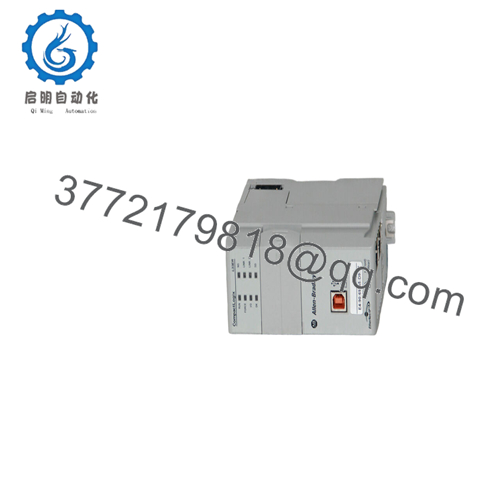
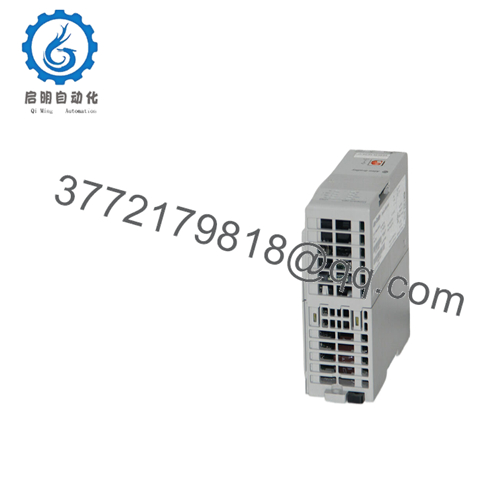
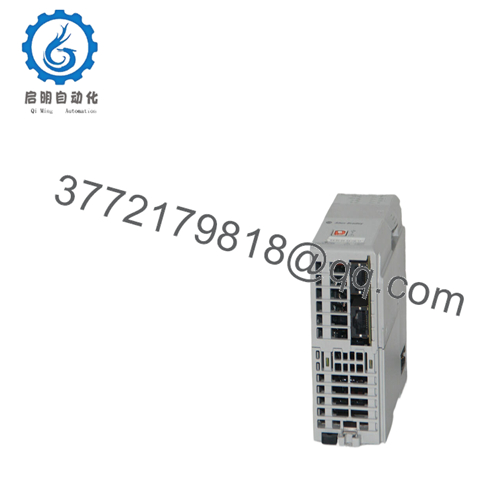
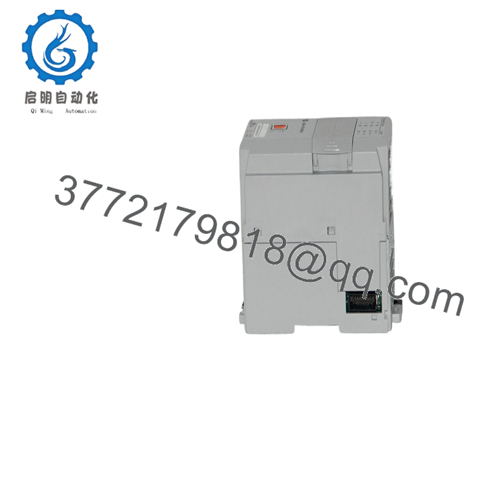
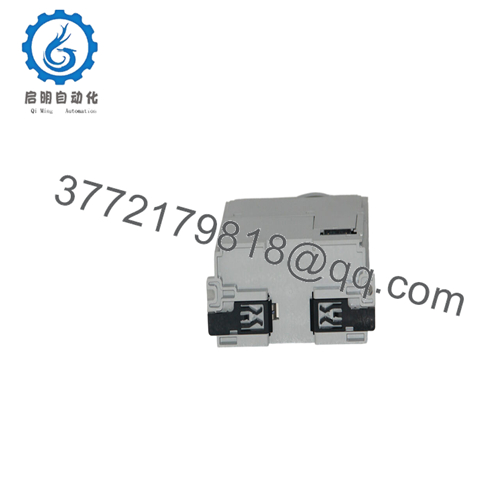
 WhatsApp: +86 16626708626
WhatsApp: +86 16626708626 Email:
Email:  Phone: +86 16626708626
Phone: +86 16626708626


